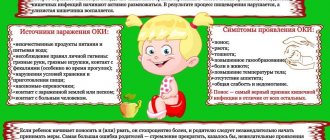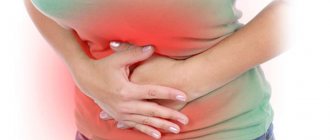A signal of trouble in the body is pain. We will try to determine in the article how to identify the cause of stomach pain and nausea and provide help. Abdominal pain is usually traced to a specific area. To understand why this happens, you need to know how the organs are located in the human stomach. It happens that similar conditions are caused by other factors.
[toc]
Nausea is a symptom of many pathologies. This phenomenon is a reaction of the celiac and vagus nerves, which transmit a signal to the vomiting center of the brain. Usually accompanied by weakness, pale skin, and increased salivation.
To determine the cause of pain, nausea, and their effective elimination, you need to determine the following:
- place of sensation;
- the man, woman or child is sick;
- age;
- accompanying symptoms.
Morning sickness without abdominal pain
If morning nausea bothers you for a long time, you should definitely consult a therapist or a gastroenterologist immediately to rule out gastrointestinal pathology (gastritis, GERD-gastroesophageal reflux disease).
| Cause and additional symptoms | How to determine | What to do |
PregnancyChanged taste, sensitivity to smells | Perform a home test, donate blood for human chorionic gonadotropin, visit a gynecologist | If nausea is severe, you need to contact a gynecologist. If attacks of nausea occur 3-5 times a day, even if they are accompanied by vomiting, there is no weight loss:
|
MedicinesTaking medications on an empty stomach or due to side effects of medications There may be a urge to vomit and other symptoms that are described in the instructions for the drug | Review your medications, many can cause nausea | Take them according to the instructions; in case of severe nausea, discuss the possibility of replacing them with other medications with similar effects. |
Biliary dyskinesia (functional dyspepsia)JP - this diagnosis has already been abolished, now it is called postprandial distress syndrome or epigastric pain syndrome or simply functional dyspepsia. It can also be combined with gallstone disease. There may be vomiting, bitterness, a metallic taste in the mouth, and nausea may occur while eating. There may be discomfort in the right hypochondrium. | Ultrasound of the liver and biliary tract | Before consulting a doctor, it is dangerous to carry out any actions because the stone will move and block the bile ducts. Therefore, sign up for an ultrasound, an appointment with a gastroenterologist, and before that:
|
HydrocephalusThis is an accumulation of fluid in the cranial cavity. Develops after a traumatic brain injury or a previous brain disease. Accompanied by headache, feeling of pressure on the eyes, dizziness | MRI or CT scan of the brain | Before consultation with a neurologist and neurosurgeon, no active actions should be taken. Can:
|
Morning sickness and pain in the upper abdomen
| Symptom and presumptive diagnosis | How to confirm | What to do |
Stomach hurts and nausea on an empty stomachOr when you feel hungry or 30 minutes after eating
| Only with the help of FEGDS (fibrogastroesophagoscopy, when you need to “swallow a probe” equipped with an optical system). A gastroenterologist may suspect this diagnosis | Before visiting a doctor, you can only:
If you feel very nauseous, you can take 1 tablet of the drug "Mosid" under the tongue, but after 15-30 minutes you must eat |
Pain and nausea occur after eating 1.5-2 hours
| Only with the help of FEGDS (fibrogastroesophagoscopy, when you need to “swallow a probe” equipped with an optical system). A doctor of any specialty can suspect these diagnoses by palpating the abdomen | Similar to what is observed in diseases of the duodenum. |
If nausea is accompanied by pain in the middle abdomen
There may be several options here. You can suspect them based on what you ate the day before:
Nausea after eating fatty foods
This may be biliary colic, which develops both during acute cholecystitis (it is treated in a surgical hospital) and during exacerbation of chronic inflammation of the gallbladder (it is treated by therapists). Most often, there are stones in the gallbladder.
An attack of biliary colic is pain in the right hypochondrium, which can radiate to the right half of the neck and back. In addition to nausea, vomiting appears many times, mixed with bile.
If there is no increase in temperature, and the pain does not become unbearable and does not spread throughout the entire right hypochondrium, the stool does not lighten and the urine does not darken, help is as follows (otherwise, urgently go to the ambulance):
- take a tablet “No-shpa” or “Spazmalgona”;
- drink more fluids;
- exclude fatty foods, fatty meats and fish, sweets, smoked and spicy foods from the diet;
- go to the pharmacy and buy any domperidone drug: Domrid, Motilium or Motoricum, as well as Rabeprazole or Pantoprazole. After taking 1 tablet of two different drugs, you need to wait 30 minutes, then eat a little, at least a crust of bread, despite the nausea;
- You need to eat 5-6 times a day, in small portions, so that the intestines and stomach begin to move in the right direction - away from the mouth, and not towards it, and together with the intestines, the gallbladder begins to move correctly, which was the cause of nausea.
Abdominal pain and nausea appeared after a feast with alcohol, spicy and meat foods
If your stomach hurts and you feel nauseous, and the pain is noted in the left hypochondrium or encircles, and vomiting and diarrhea soon appear, this speaks in favor of pancreatitis. After such an error in diet, pancreatitis can develop without pain, but it does not become less dangerous.
- All that can be done at home, before the ambulance doctors arrive, is to take a No-shpy or Spazmalgona tablet.
- And also a proton pump blocker (esomeprazole, rabeprazole). Perhaps an aluminum antacid (Almagel, Gastal, phosphalugel), or Cerucal or Motilium (see heartburn medications).
Lack of emergency medical care for acute pancreatitis can lead to death.
If nausea with or without abdominal pain appears after eating foods with cream, dairy products, ready-made food in questionable public catering or in hot weather
Here, most likely, there is a foodborne toxic infection (poisoning), which is indistinguishable from an intestinal infection. Both of these diseases have common symptoms: nausea and diarrhea, weakness, and with an intestinal infection (such as salmonellosis, dysentery, infection caused by E. coli) - fever. Please note: both of these diseases are similar to pancreatitis, the difference is the absence of abdominal pain, vomiting rarely becomes indomitable, the stool is not always mushy - it may contain mucus, greens, and streaks of blood.
What can be done at home in this case, see treatment of food poisoning:
- drink a sorbent (activated carbon, White carbon, Polysorb, Filtrum, Enterosgel);
- drink as much water as possible;
- take the tablet Enterofuril, Stopdiar (Nifuroxazide).
Please note: drugs such as Loperamide or Imodium should not be taken if you have food poisoning.
Possible causes of discomfort
When a person experiences vomiting and abdominal pain, this may indicate a dangerous disease. If the stomach is twisting, and the patient suffers from diarrhea and uncontrollable vomiting, you should immediately call an ambulance, especially if the temperature rises sharply. Pain in the lower abdomen in women may indicate gynecological diseases. It happens that the stomach hurts and feels sick very often, and the person does not know what to do. In this case, the main thing is not to harm your own body through illiterate self-medication.
Pain in different parts of the abdomen may indicate problems with organs such as:
- Liver. In this case, the pain is localized in the hypochondrium and occurs after drinking alcohol, overeating, eating fatty and fried foods,
- Pancreas. The pain is girdling in nature and is observed during attacks of acute and chronic pancreatitis - inflammation of the pancreas. A similar condition is also characteristic of pancreatic cancer,
- Stomach. Heaviness and pain in the stomach are a typical symptom of gastritis and ulcers,
- Gallbladder. Pain in the lower abdomen, severe attacks may indicate the possible presence of stones or sand,
- Reproductive organs. In this case, the lower abdomen hurts both in front and behind, strongly radiating to the lower back. In men this happens with prostatitis, in women - with fungal infections and inflammation of the uterine appendages. In this case, the therapist refers the patient to a urologist or gynecologist.
When pain is combined with nausea, it often signals an infection. This condition also occurs with appendicitis, when the appendix, the vermiform appendix of the intestine, becomes inflamed. Similar symptoms are characteristic of peritonitis - acute inflammation of the abdominal cavity. Peritonitis often occurs as a complication after abdominal surgery, as well as as a consequence of mechanical injuries - blows, bruises. Therefore, after any fall on your stomach, you must carefully monitor your well-being. It is better to immediately show a child to a surgeon after such an injury.
Abdominal pain with nausea is also characteristic of dangerous infections caused by pathogenic microbes entering the human body. These are diseases such as botulism and salmonellosis. Typically, these diseases begin with a sharp rise in temperature and severe pain; later, nausea, diarrhea, and indomitable vomiting are added to these symptoms. Such diseases cannot be treated at home; the patient is isolated from others and placed in an infectious diseases hospital until complete recovery.
In children, nausea and abdominal discomfort, as well as general weakness and dizziness, often indicate helminthic infestation - the penetration of helminths into the body. To confirm this assumption, the pediatrician prescribes a stool test for worm eggs. If the test result is positive, appropriate treatment is prescribed using drugs that expel parasites. You can also use folk remedies: pumpkin seeds.
Pain during menstruation
Girls and teenage girls often have stomach pain during menstruation. Girls suffering from vegetative-vascular dystonia also experience frequent dizziness during this period. With a sharp drop in blood pressure, you may feel slightly nauseous. If a girl doesn’t know what to do when she feels nauseous and has a stomach ache during her period, she needs to consult a gynecologist. This often happens with inflammatory processes and fungal infections of the female reproductive organs.
A girl should see a doctor if:
- Menstruation is accompanied by severe pain in the lower abdomen, which is spasmodic or cramping in nature,
- During menstruation, there is a large loss of blood, and the blood is released along with clots,
- Weakness during menstruation prevents you from leading an active lifestyle, studying, working, playing sports,
- Menstruation lasts more than six days or less than two days,
- Menstruation occurs irregularly over a long period of time.
Menstruation, which is accompanied by severe pain, nausea and vomiting, and indigestion, may indicate the presence of inflammatory processes in the female genital organs, and can also be caused by endometriosis. In the latter case, pieces of the endometrium enter the menstrual blood, this causes severe pain, and characteristic clots can be easily detected in the blood.
Abdominal pain during pregnancy
Pregnant women, especially in the early stages, often experience similar symptoms. After the hormonal levels in the body stabilize, this condition usually goes away on its own. If the nausea is very severe and the body does not accept any food, the doctor usually recommends hospitalization. When the stomach hurts and feels sick, the main reason for this in pregnant women is the body’s adaptation to a new state.
Sometimes women carrying a child may experience severe nagging pain in the lower abdomen in the early stages. Most often this occurs due to the fact that the uterus becomes more toned. This condition must be treated very carefully, since a sharp increase in the tone of the uterus can provoke a miscarriage - spontaneous termination of pregnancy. At the slightest suspicion of a threat of miscarriage, the woman is urgently hospitalized. Here are the main symptoms indicating a threatening condition:
- Painful cramps in the lower abdomen, which often repeat at different intervals,
- A sharp increase in body temperature, chills,
- Bloody vaginal discharge, reminiscent of menstruation. Brown discharge may also indicate a threat of miscarriage.
- General weakness, sharp deterioration in health.
Also, severe nagging abdominal pain can occur if a woman’s body lacks progesterone, the hormone responsible for bearing a child. This hormone is of great importance in the early stages. If tests show a lack of progesterone in the body, intravenous administration of this hormone or taking tablets containing the required concentration of this substance is prescribed. The most famous drug of this kind is Duphaston.
Stomach upset
If a person feels sick after eating and experiences abdominal pain, this may indicate simple food poisoning. This happens if the food was stale, expired, too fatty, salty or overcooked. To understand why poisoning occurred, a person must remember everything he ate during the day or the night before. If there is pain in the lower abdomen and nausea after drinking alcohol, we are talking about kidney problems. The kidneys cannot process alcohol and their work malfunctions.
Statistics say that most often stomach upsets in adults and children occur after holidays, which are accompanied by heavy feasts. Usually people call an ambulance because of stomach pain, nausea and because they overate on New Year, March 8 or February 23. This also often happens on Easter with those who strictly observed the Orthodox Lent.
A sharp change in diet and an increase in the volume of food consumed leads to the fact that the stomach refuses to accept food. Because of this, chronic diseases of the gastrointestinal tract, which a person may not have even suspected before, may worsen. The disorders often occur with illnesses caused by a virus. The most common diseases of this type are rotavirus infection and viral hepatitis.
For prevention, it is necessary to strengthen the immune system, thoroughly wash your hands before each meal and with boiled water - fruits and vegetables. It is also advisable to brush fruits purchased at the supermarket, because the peel may contain traces of aggressive chemicals. Vegetables and fruits are coated with these substances during transportation to prevent them from spoiling.
If there are any signs of abdominal pain and nausea, you should consult a doctor and undergo the prescribed tests. An adult should see a therapist; children should be examined by a local pediatrician or (in case of acute pain) a surgeon. If necessary, the patient is referred to another specialist - a gastroenterologist. If you do not delay treatment, you can avoid dangerous complications and completely get rid of the unpleasant condition. It should be remembered that a healthy person should not have a stomach ache.
Nausea and pain in the lower abdomen
It could be:
- Acute appendicitis. In this case, pain is in the foreground. It can descend from the epigastric region to the area below the navel and on the right, or it can be found immediately below the navel and on the right. Nausea is not constant, maybe vomiting 1-2 times, loose stools once or twice;
- In women: inflammation of the uterine appendages, ovarian apoplexy, ectopic pregnancy. Pain in the lower abdomen, which is localized on one side, also comes to the fore.
What to do to avoid nausea in these cases? Only the intervention of a doctor can help here: for appendicitis - a general (abdominal) surgeon, for diseases of the female genital organs - a gynecologist.
Associated symptoms indicating the disease
The development of a certain pathology can be roughly determined by the accompanying symptoms, but it should be understood that the final diagnosis can be made only after examination.
Stomach pain and vomiting
Abdominal pain, which is accompanied by vomiting, always indicates the development of an inflammatory or infectious process. Such symptoms indicate that the human body is trying to remove toxins, and the reasons for this can be very diverse.
Main reasons:
- Food poisoning
. An additional symptom may be increased body temperature. - Liver diseases
. In this case, the pain syndrome is localized in the area of the gallbladder (right hypochondrium). - Appendicitis
. It is very important to recognize this pathology in a timely manner, otherwise it poses a threat to life. The most common location of pain is the lower abdomen. - Strangulated hernia
. In this case, the pain covers the entire abdominal cavity, which makes diagnosis much more difficult. - Exacerbation of stomach ulcers
. This pathology may be accompanied by diarrhea or constipation.
Lower abdomen hurts
When the lower abdomen hurts, it is caused by various diseases of the abdominal cavity. Pain in this localization may occur due to the formation of kidney stones. This pain is very excruciating, it radiates to the back area. In severe cases, the pain syndrome is accompanied by chills and nausea, and blood often appears in the urine.
Other pathologies that cause pain in the lower abdomen:
- Irritable bowel syndrome
a. In this case, spasmodic pain occurs, increased gas formation is observed, as well as alternating constipation and diarrhea. - Appendicitis
. Such pain can be observed for a long time, but under certain circumstances an exacerbation may occur, which requires urgent medical intervention. - Ulcerative colitis
, which is associated with the appearance of ulcers on the walls of the colon and rectum. Along with severe pain, fatigue and weight loss are always observed, and bloody diarrhea appears over time. - Urinary tract infection
. Such diseases are very often observed in women. - Mesenteric adenitis
, which is characterized by inflammation of the glands on the walls of the small intestine as a result of viral infection.
My head is spinning
Cephalgia (headache) and dizziness with abdominal pain can develop due to the fact that acute pain syndrome provokes cerebral vascular spasm. As a result, hypoxia occurs. As a rule, dizziness begins suddenly, the reasons for this can be serious pathologies, such as: perforated ulcer, acute pancreatitis, renal colic, acute cholecystitis, cholelithiasis.
In addition, the stomach and head can hurt at the same time due to allergic manifestations of premenstrual syndrome in women, nervous strain and stress, or increased physical activity.
Diarrhea (diarrhea)
A combination of symptoms such as abdominal pain and diarrhea is most often a sign of poisoning.
In this case, it may be caused by:
- Chemicals that are part of various detergents, paints and solvents, and sometimes even medications.
- Viruses and bacteria, after infection with which manifestations of intoxication are observed.
- Poor quality food.
In addition, various inflammatory processes can cause diarrhea and abdominal pain. Against this background, serious diseases such as colitis, enteritis, and appendicitis develop.
Abdominal pain in the navel area
The most likely cause of pain in the navel area is an inflammatory process. In addition, pain can be localized in this place when pathologies occur in the kidneys, stomach or ureters.
Treatment for motion sickness
If you get sick in the car and feel sick, it is recommended:
- do not board transport hungry or immediately after eating;
- sit in a vehicle next to the driver or so as to drive facing the direction of travel;
- do not look out the side window;
- lean towards the turn;
- do not read while driving;
- if you are on a ship, go out on deck more often; if in a car, open the windows more often for ventilation (or turn on the cold airflow, directing it towards yourself);
- suck on mint or sour candies;
- do breathing exercises;
- You can take a Dramamine tablet or Avia-sea if there are no contraindications (see first aid kit for the road).
If you are already feeling seasick and nauseous, try to go out and breathe some fresh air, at this time you can chew a piece of ginger and shake your head slightly from side to side.
If you get motion sickness all the time, you need to be examined by a neurologist, ask him what gymnastics for the vestibular apparatus can be used in your case, what medications to take. Do not buy over-the-counter anti-motion sickness medications without consulting your doctor; each of them has serious side effects that can harm a person with chronic or congenital diseases.
Nausea after alcohol
When you feel sick after drinking:
- take a sorbent (Activated carbon at the rate of 1 tablet per 10 kg of weight, Polysorb, Enterosgel, Atoxil or similar drugs);
- drink more water;
- after 1-1.5 hours, drink 500 mg of ascorbic acid, drink tea with lemon, rosehip decoction, or eat an orange or grapefruit - vitamin C partially neutralizes the effect of alcohol;
- after at least 1 hour, drink another sorbent;
- all this time, try to sleep and drink more, but at the same time make sure that a sufficient amount of urine is excreted - an increase in blood volume in this state is dangerous, as it further increases the load on the heart, which also suffers from alcohol;
- there is no need to lean on mineral water: gases dissolved in water will cause an increase in the volume of the stomach, which will make you even more nauseous;
- Use the sorbent at least 4 times a day;
- do not neglect water procedures - they will help alleviate the condition.
Nausea and lower back pain
This is how renal colic can manifest itself - a condition when the ureter is compressed (usually by a stone or tumor) or irritated (by inflammation). It manifests itself as severe pain in the lower back, radiating to the genitals and thigh, accompanied by nausea, necessarily accompanied by vomiting.
Help: drink No-shpa, Spazmalgon, Baralgin along with Analgin, Diclofenac or Ibuprofen, apply a warm heating pad to the lower back. If symptoms persist for 30 minutes or increase, call an ambulance so that the blockage of the ureter does not result in the death of the kidney.
First aid for stomach pain
If your stomach hurts and you feel nauseous, you should not self-medicate. There is no need to take painkillers so that the clinical picture of the disease is not erased before the doctor arrives. It is necessary to lie down in bed or take a sitting position without making sudden movements. You should not eat any food, as this may cause vomiting. You can only drink boiled water or pure mineral water without gas. If the pain is very severe, you can take a drug that relieves spasms. Under no circumstances should you place a heating pad on your stomach, as this can promote the spread of inflammation. If the pain is caused by a bruise, cold may be applied to the area of the bruise.
When nausea is accompanied by fever
If you feel sick and have a fever, it could be any disease caused by a microbial cause: sore throat, poisoning, complicated by inflammation of the abdominal organ. But then the pain in the affected organ usually comes to the fore.
If you feel nauseous but not vomiting with a fever, and these are the main symptoms that worry you, it could be either kidney inflammation (pyelonephritis) or pneumonia.
What to do? See a doctor before the inflammation turns into blood poisoning and life-threatening complications arise.
Ectopic disorders
In addition, there are ectopic causes of discomfort in the lower abdomen in women:
- Painful sensations, for example, can occur during appendicitis. Typically, its onset is characterized by dull pain. At this time, the patient often has no appetite. After a certain period of time, the pain near the navel moves to the lower abdomen, and fever occurs.
- There is pain in the lower abdomen and nausea also in the presence of a strangulated hernia, if there is diffuse pain. The main difficulty for specialists in making a diagnosis is that in some cases they do not examine those areas where pathology forms, in particular, the anterior abdominal wall.
- During diseases of the genitourinary system, urine contains microorganisms, leukocytes and red blood cells. When kidney stones are observed, severe pain occurs in the side of the abdomen, running from the kidneys down the ureter and further into the pelvis and urethra, and then to the inner parts of the thighs. Pain is felt when palpating near the affected organ.
- An increase in temperature, fever, lethargy, nausea and fainting are observed in the acute form of pyelonephritis. The diagnosis can be confirmed mainly by urine analysis.
- Pain in the lower abdomen and nausea in a situation of urine retention due to the fact that the bladder is greatly stretched. Pain in the lower abdomen and the appearance of a tumor-like neoplasm in this area indicate possible urinary retention. In such a situation, it is necessary to catheterize the organ, and then do a thorough examination.
- Some patients experience pain in the lower abdominal cavity and nausea in a chronic form, during irritable bowel syndrome, Crohn's disease (long-lasting inflammation in the gastrointestinal tract), and ulcerative lesions of the lining of the large intestine.
When nausea is accompanied by weakness or dizziness
When a person complains that he is feeling sick and has weakness, it could be:
- A decrease in hemoglobin, when a change in taste is also noted, the skin and mucous membranes become pale, and jams appear in the corners of the mouth. Here, eliminating the cause of anemia and taking those medications that will help form a normal amount of hemoglobin will help (see iron supplements for anemia);
- A decrease in blood glucose levels (this is typical for pregnancy or diabetes, when insulin was administered and then insufficient food was taken). In this case, you need to drink sweet tea, eat sugar, honey or sweets, see symptoms of hypoglycemia;
- Reduced blood pressure levels. At the same time, one often feels nauseous and dizzy, and weakness is noted. Try to relax, drink sweet strong tea or coffee. If it doesn’t help, you need to call an ambulance: perhaps the pressure is reduced not due to vegetative-vascular dystonia (VSD), but due to severe inflammation, which has not yet manifested itself in anything else
- Exhaustion. Then the person himself can say that he is not eating enough or eating a limited list of foods. Help: with the help of a doctor, find out what substances are missing in the body and replenish their deficiency.
If you have a headache and nausea, it could be:
- Migraine: half of the head hurts, nausea but not vomiting, temperature is normal, movements, speech, swallowing, breathing are not impaired. Treatment - Nomigren or similar drugs, which should be prescribed by a doctor after ruling out stroke and micro-stroke;
- Meningitis. It is also manifested by increased temperature and photophobia. Treatment is only in an infectious diseases hospital, since this condition is life-threatening;
- High pressure. In this case, the head hurts in the back of the head, “spots” appear before the eyes, and the tonometer will show a pressure above 140/100 mm Hg. Help: taking a drug that lowers blood pressure. This can be “Captopress”, taken under the tongue, “No-shpa” or “Spazmalgon”, washed down with water. If the pressure is above 160/100 mm Hg, it is better to call an ambulance before a stroke or hemorrhage develops;
- A stroke, in which a headache comes to the fore, followed by speech impairment, numbness of the limbs, deterioration of sensitivity in them and a sharp limitation of movements. Treatment is only in a neurological hospital. The sooner you contact, the higher the chance of surviving and leaving with less damage;
- A transient ischemic attack is a transient, completely reversible disorder of cerebral circulation (such as a spasm of a vessel supplying the head). May pass, or may then transform into a stroke;
- Encephalitis. It manifests itself as headache, nausea, vomiting, fever, against the background of which speech, or movement, or sensitivity of the torso and limbs are impaired;
- Brain tumor. At the same time, disturbances in sensitivity, speech, movements, and swallowing are also noted, but these symptoms develop gradually and are not accompanied by an increase in temperature. Treatment is only in a hospital. The patient will not be able to provide first aid to himself at home.
If you feel dizzy and nauseous, these are the manifestations of diseases that can only be treated by eliminating the cause that caused them. All of them do not allow self-medication. This:
- Meniere's disease;
- labyrinthitis;
- otosclerosis;
- neuritis of the vestibular nerve.
Prevention and prognosis
It is easy to prevent the appearance of nausea due to poisoning or any other provocateur mentioned above - you should follow general simple preventive recommendations:
- lifelong cessation of bad habits;
- maintaining a moderately active lifestyle;
- minimizing the impact of stress;
- proper and balanced nutrition;
- taking only those medications prescribed by the clinician;
- compliance with safety rules when working with chemicals and toxic substances;
- timely diagnosis and elimination of any ailments, including those from the gastrointestinal tract;
- undergoing a preventive examination (twice a year) at the clinic.
Nausea in men has a favorable outcome. The ailment is easily treatable and is not life-threatening. However, a complete lack of therapy will lead to frequent relapses of attacks and the formation of complications of the underlying disease.
Nausea in a child
What to do if your child is vomiting:
- Try to calm him down.
- Do not leave him while he is experiencing nausea: young children do not know what to do when vomiting and may choke on their own vomit. Therefore, there should be one of the relatives nearby who will either turn the head of the lying child to one side, or tilt him forward if vomiting develops.
- Remember: vomiting is a defense mechanism; like nausea, you shouldn’t just stop it without understanding the cause. Therefore, do not try to give your baby adult pills or anti-nausea medications. It’s better to arrange a “water-tea” break, without letting the child eat for at least 2 hours, but only drinking water and tea, not very sweet, maybe with the addition of mint and chamomile (if there are no allergies to them).
- If you are sure that there has been poisoning from stale food or that the child may have eaten an inedible item, give him Smecta, Polysorb or Atoxil in an age-appropriate dosage. If the child is small (up to a year), this cannot be done until intussusception has been ruled out.
- You should urgently call a doctor if your child is vomiting without fever and:
- nausea lasts more than 2 hours;
- the child's lethargy increases;
- the vomit was green, the vomit was brown or streaked with blood;
- there was vomiting “fountain” or “mouth full”;
- the child smells of acetone;
- there are complaints of abdominal pain, headache or dizziness;
- nausea (the urge to vomit) or vomiting itself occurs in a child under one year of age;
- body temperature increased;
- in addition to nausea, there is diarrhea;
- mushrooms were consumed the day before.
Author:
Krivega Maria Salavatovna resuscitator











